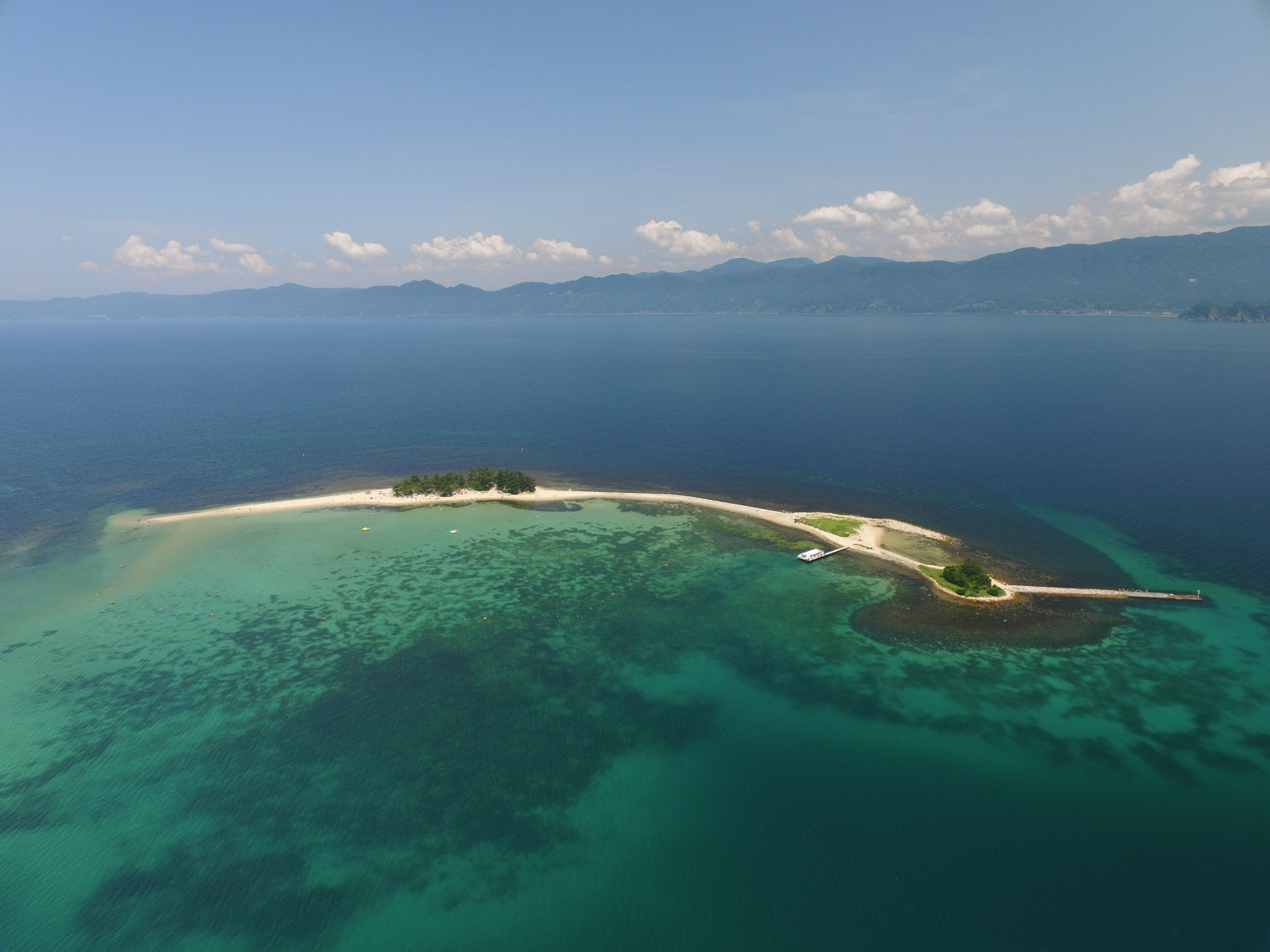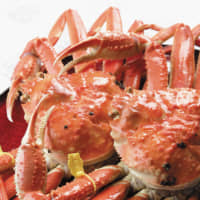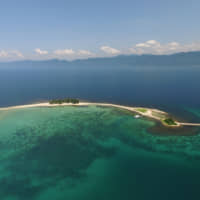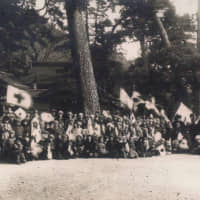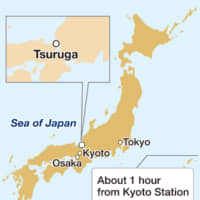This is the second article in a Sea of Japan series, showcasing natural beauty spots, tourist attractions, conservation initiatives and the region’s historical significance.
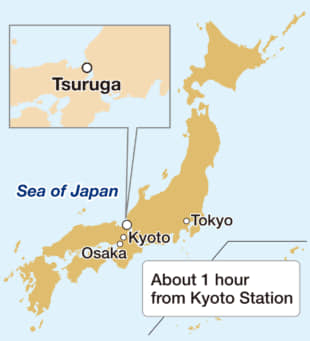
From the modern glass-and-steel facade of Tsuruga Station surrounded by traditional homes and storefronts to the European-style Red Brick Warehouse and occasional Russian signage, it’s obvious at first glance that the city of Tsuruga in Fukui Prefecture has seen many visitors from the wider world over the years.
Originally called Keinoura, the port of Tsuruga in central Japan was historically a major commerce hub between the country and the world, including the Manchurian kingdom of Balhae or the ancient Chinese state of Song.
In 1899, it was officially designated an international port open to foreign vessels, eventually serving as a direct route between Tsuruga and Vladivostok across the Sea of Japan in 1902.
This designation, combined with the Trans-Siberian Railway, linked Tsuruga not only to Russia, but also the rest of Europe. With time, and thanks to the opening of the Europe-Asia International Express between Shimbashi (in Tokyo) and Kanegasaki stations, it was eventually possible for Japanese to book a voyage from Tokyo all the way to Paris. By offering travelers the shortest route possible to Europe from Japan, Tsuruga has more than earned the moniker of “the Harbor of the East.”
Of historical significance
However, Tsuruga would eventually become known under another name — “the Port of Humanity.” Some of the lesser-known victims of the Russian Revolution (1917 to 1923) were the orphaned children of Polish political prisoners sent to Siberia. Alone, hungry and often homeless, the orphans had nowhere to turn to until Japan extended a helping hand.
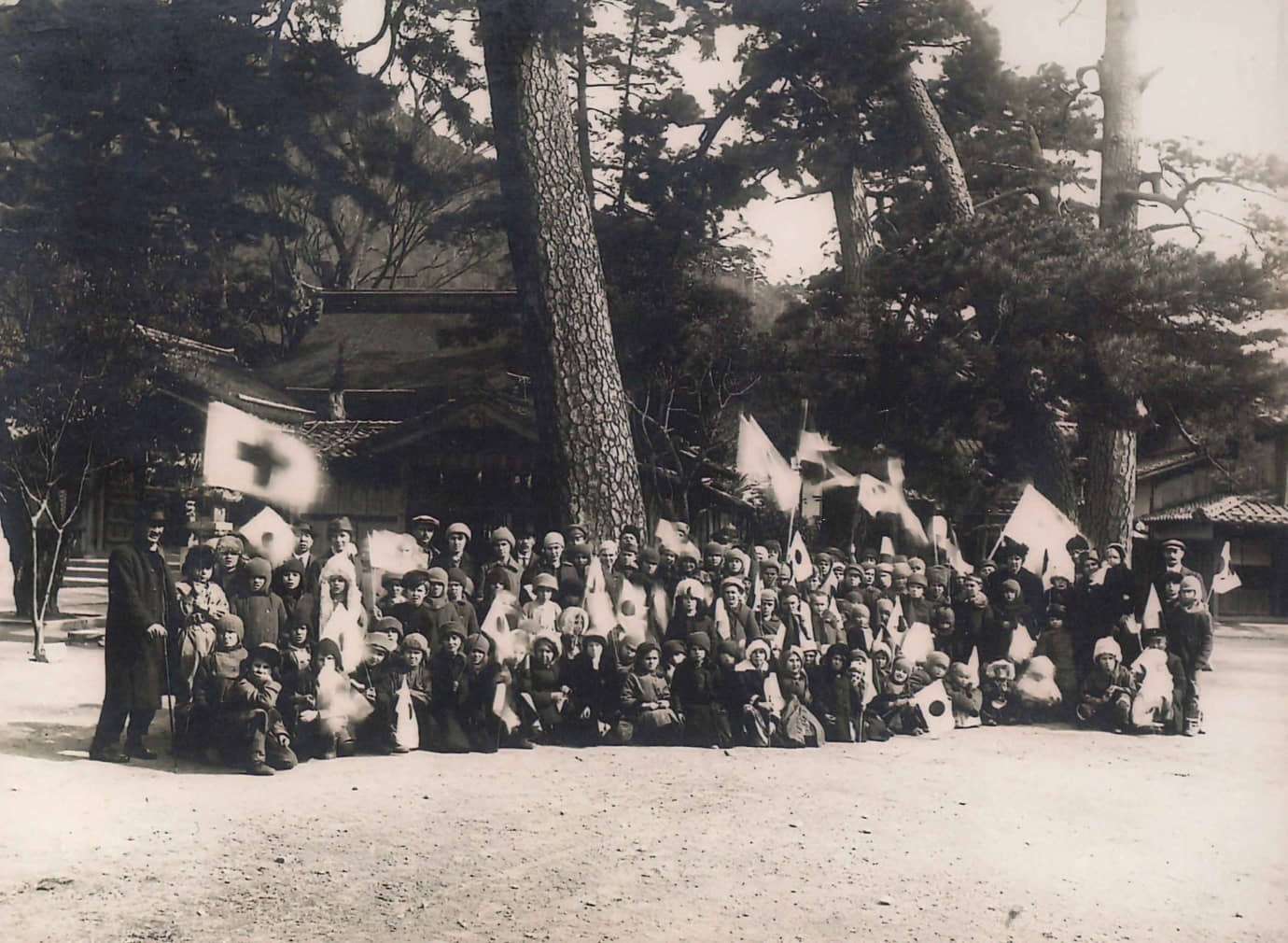
With the assistance of a Polish committee in Vladivostok, Tsuruga agreed to take in the ships carrying the rescued orphans; the first of which, the Chikuzen Maru, docked at the port in July 1920. In total, 375 Polish children arrived in Tsuruga in five separate crossings and all were met with the warmest of welcomes, receiving toys, candy, fresh fruit and new clothes to replace their tattered ones.
They, as well as a second wave of 388 orphans who arrived in 1922 , barely spent a day in the port city before being repatriated back to Poland via Yokohama and Kobe. Although their stay was brief, after the horrors they had witnessed, Tsuruga must have felt like heaven on earth.
Their journey is today immortalized at the Port of Humanity Tsuruga Muzeum (Polish for “museum”), which also details another time when Tsuruga answered a cry for help.
In July 1940, not long after the start of World War II, Jewish refugees in Lithuania descended on the Japanese Consulate in Kaunas, begging for transit visas to Japan to escape the Nazi regime. Diplomat SUGIHARA Chiune began issuing “visas for life” to anyone who asked, later even throwing travel certificates out of the train window after the consulate had closed down.
Thanks to Sugihara, between 1940 and 1941, several thousand Jewish refugees managed to land safely in Tsuruga where, like the Polish orphans before them, they were greeted with open arms. Many arrived with little to no personal possessions or money, so the people of the city presented them with baskets of apples and other gifts. Another citizen opened his bathhouse to the refugees for free.
These stories and testimonials, plus a wealth of historical resources, are on display at the museum. However, those interested in visiting should note that the current facility plans to relocate to a new, more spacious and better equipped location with more exhibits on Nov. 3, this year.
Natural splendor
Also known as “the Hawaii of the Hokuriku region,” the uninhabited island of Mizushima is one of many timeless examples of nature that has endured throughout the area’s eventful history.
Located at the tip of the Tsuruga Peninsula, Mizushima is a popular summer vacation and diving spot that can easily be reached via ferry between July and August.
A bit closer to the city center is another picturesque landmark — Kehi no Matsubara, a 1.5 km-long pine grove overlooking Tsuruga Bay. The contrast between the lush green trees, blue sea and nearly white sands is simply breathtaking and makes a good case for why Kehi no Matsubara is considered one of Japan’s three most beautiful pine groves. The woods have walking paths, but the Nakaikemi wetland is the premier location for trekking in Tsuruga.
A designated Ramsar site (wetlands of international importance), Nakaikemi is relatively small. It measures only 25 hectares, yet it’s absolutely teeming with life. In what at first glance looks like a field of weeds are actually about 3,000 species of plants and animals, including 60 endangered ones. Besides 72 of Japan’s 200 species of dragonflies, one can also find many varieties of waterfowl and other birds, including the Japanese yellow bunting, which only breeds in Japan, and is one of many reasons the spot is a birdwatcher’s paradise.
The wetlands are also accessible via a hiking trail, making for an exciting mountain excursion. An ideal time to visit the area is around May when the wetlands are basked in the yellow of blooming sawaoguruma flowers that are considered a symbol of Nakaikemi. The wetlands are located just a 10-minute taxi ride from the city center, making them an easily accessible detour on any visit to the region.
Local cuisine
No visit to Tsuruga is complete without trying some of the local food. Tsuruga is known for its wintertime specialties Echizen crab and blowfish taken straight from the Sea of Japan.
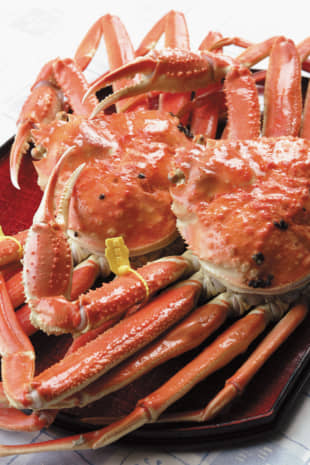
A famous nonfish specialty is Tsuruga ramen. Made with a tonkotsu (pork bone) and chicken stock flavored with soy sauce, the dish comes topped with char siu barbecued pork and includes slightly thicker noodles, making Tsuruga ramen filling but not too heavy. For a genuine Tsuruga ramen experience, make sure to get it after dark from a noodle truck or stand.
Another popular Tsuruga dish is sauce katsudon where deep-fried pork cutlets sit atop a bowl of rice. Using pork slightly thinner than typical Japanese pork cutlets, the Tsuruga variety of this dish is famous for its rich, punchy Worcestershire-type sauce that elevates the dish to new heights.
For dessert or as a souvenir, Mame Rakugan soybean cookies in the shape of a traditional okame mask end any visit to Tsuruga on a hearty, sweet note.
This series is sponsored by the government of Japan.



